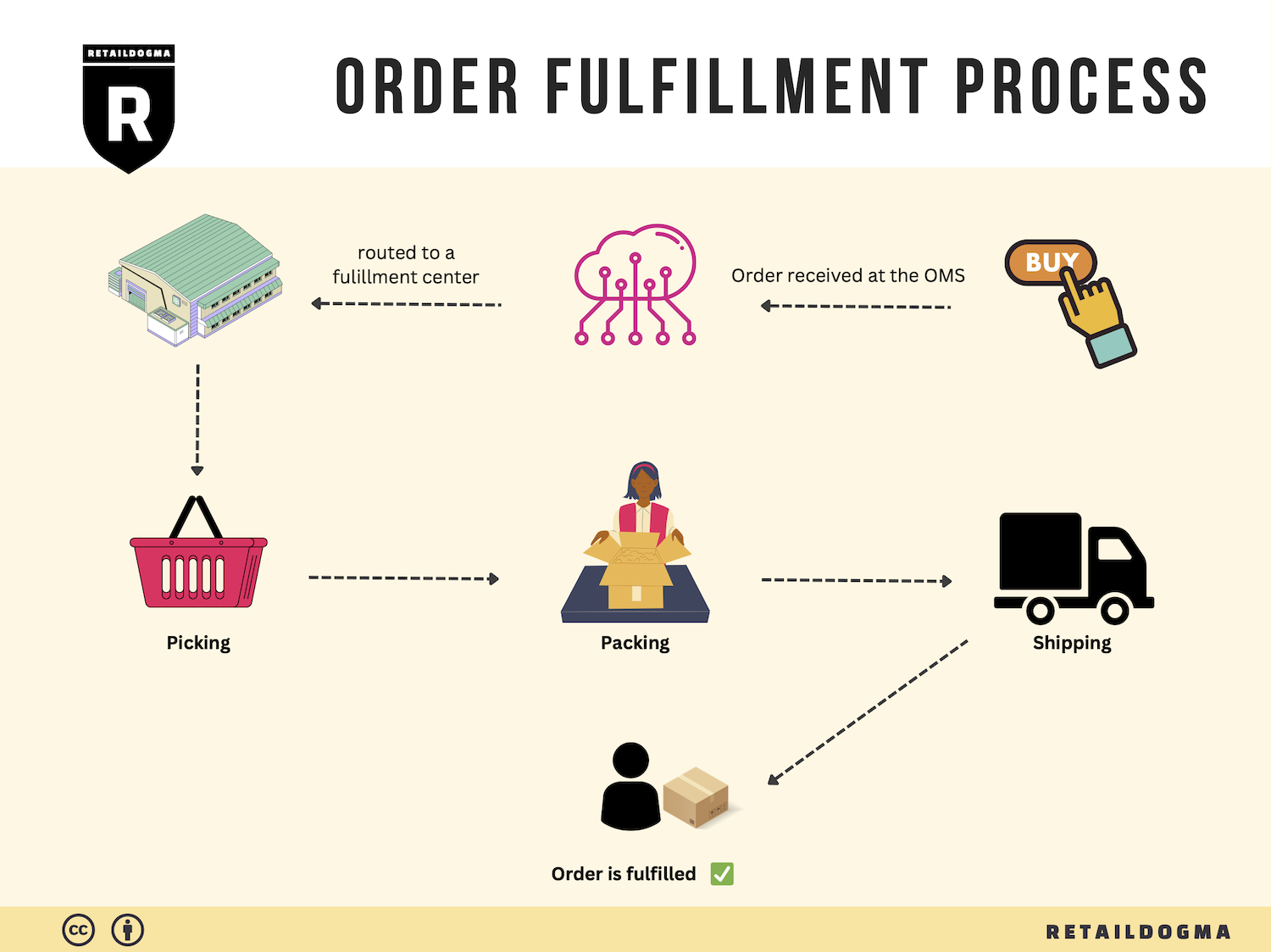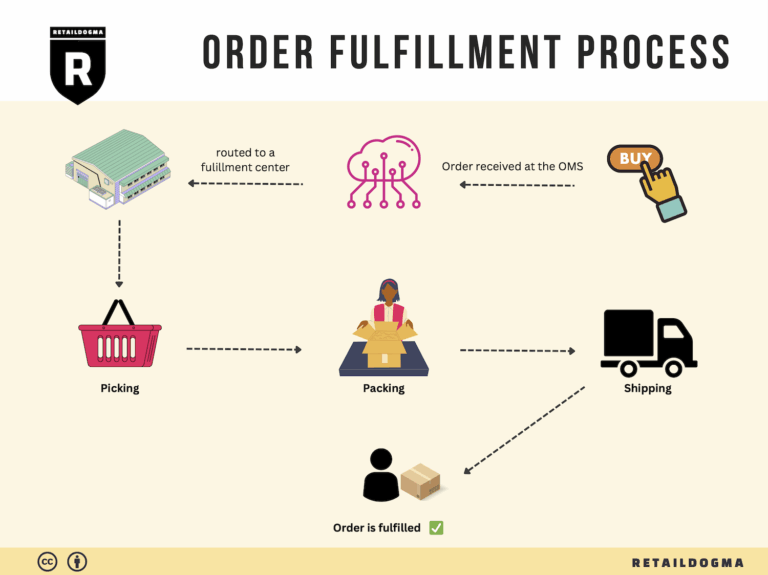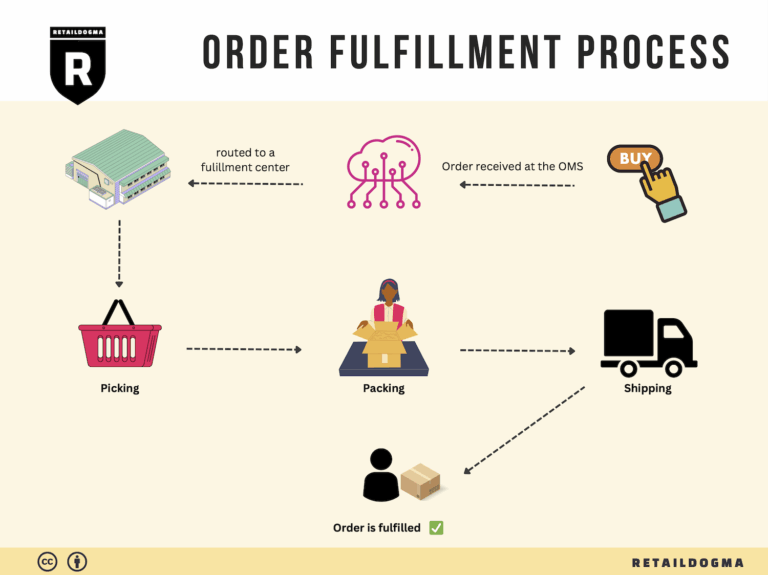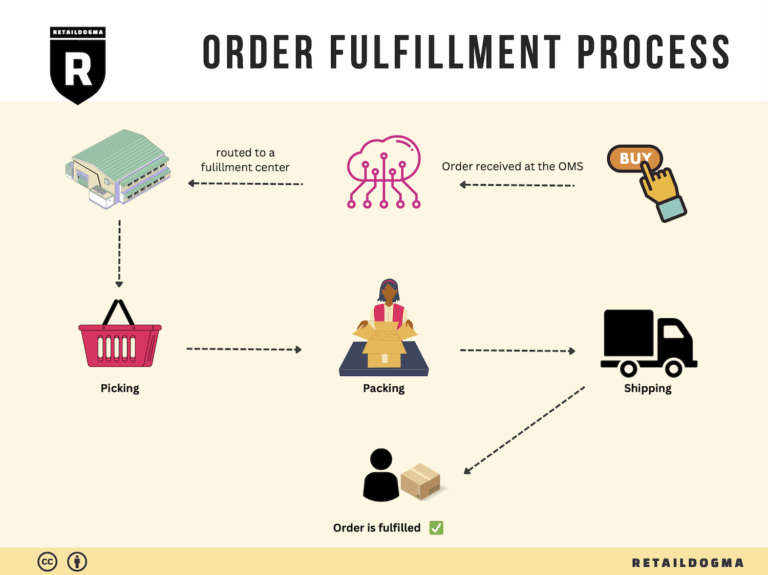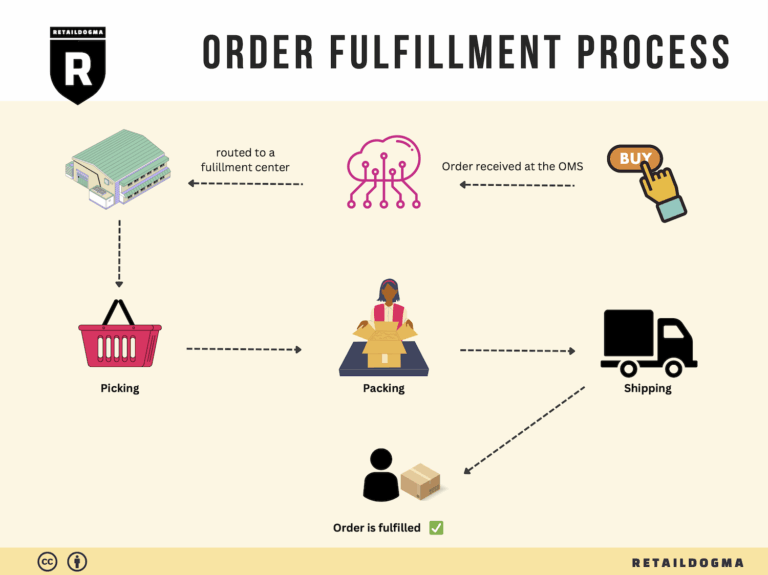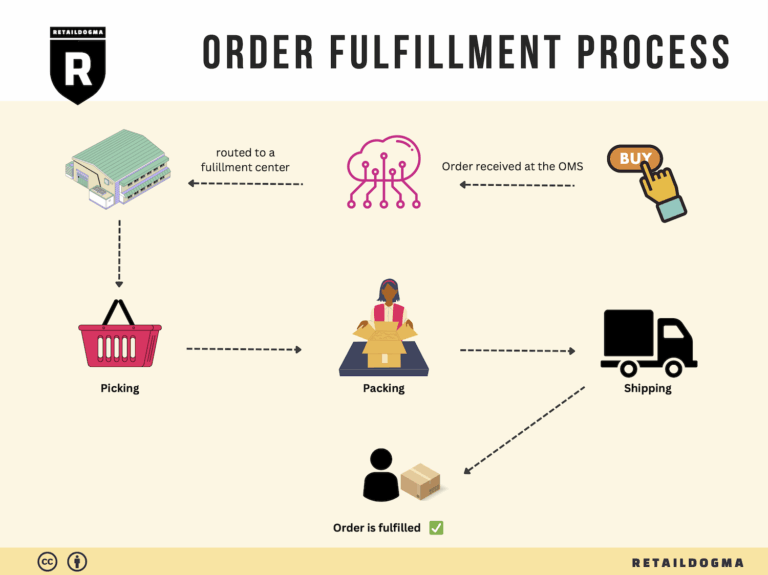Ecommerce Fulfillment Services: The Ultimate Guide (2025)
What is E-commerce Fulfillment? An Introduction for Growing Businesses
As e-commerce continues to thrive, many growing businesses face a common challenge: the overwhelming task of packing and shipping orders. The excitement of increasing sales can quickly turn into stress when it comes to managing logistics. This is where understanding e-commerce fulfillment becomes essential.
Understanding Fulfillment
At its core, fulfillment is the process of getting a product from your inventory to your customer’s doorstep. It encompasses everything from receiving inventory and storing products to picking, packing, and shipping orders. For many businesses, especially those in their growth phase, this process can feel daunting. The time and resources spent managing fulfillment can detract from focusing on core business activities, such as marketing and customer engagement.
Navigating Fulfillment Models
In this guide, we will explore various fulfillment models that can help streamline your operations. You will learn about Third-Party Logistics (3PL), where you outsource your logistics to specialized providers, and Fulfillment by Amazon (FBA), which allows you to leverage Amazon’s vast distribution network. Each model has its pros and cons, and understanding them will empower you to make informed decisions that align with your business goals.
Core Services of Fulfillment
We will also delve into the core services offered by fulfillment providers. These typically include inventory management, order processing, packaging, shipping, and returns management. Knowing what services are available can help you identify the right partner for your specific needs.
Choosing the Right Partner
Choosing a fulfillment partner is a critical decision for any e-commerce business. This guide will provide you with practical tips on what to look for in a fulfillment partner, including technology integration, location advantages, scalability, and customer service.
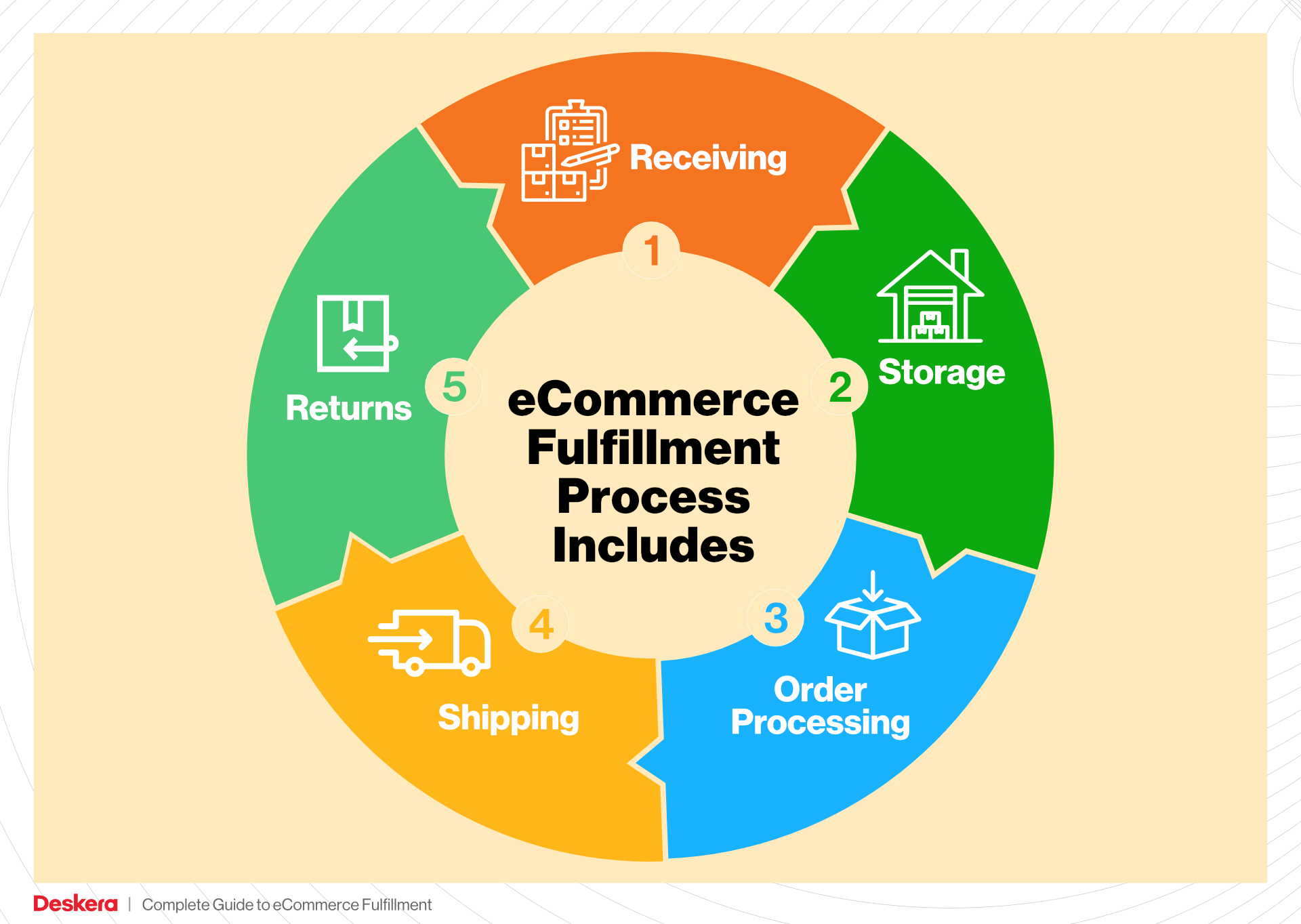
Understanding Pricing Structures
Finally, we will break down the various pricing structures associated with fulfillment services. Understanding the costs involved—such as storage fees, pick-and-pack fees, and shipping rates—will help you budget effectively and avoid unexpected expenses.
Empowering Your Business Decisions
Our goal with this guide is to empower you to make smart, strategic decisions about your logistics. By providing insights into e-commerce fulfillment, we aim to help you streamline your operations, reduce costs, and ultimately enhance the customer experience. As you navigate the complexities of fulfillment, remember that the right strategy can turn logistics from a burden into a competitive advantage.
What You’ll Learn In This Guide
- What is E-commerce Fulfillment? An Introduction for Growing Businesses
- The Order Fulfillment Process: From ‘Buy’ Button to Customer’s Door
- Comparing Fulfillment Models: In-House vs. 3PL vs. Dropshipping
- A Deep Dive into Amazon FBA: Pros, Cons, and Who It’s For
- Core Services Offered by Fulfillment Centers
- How to Choose a Fulfillment Partner: A 6-Point Checklist
- Understanding Fulfillment Pricing: A Breakdown of Common Fees
- Frequently Asked Questions (FAQs) about Fulfillment
- Conclusion: Is Outsourcing Fulfillment the Right Move for Your Business?
- Important Disclaimer
The Order Fulfillment Process: From ‘Buy’ Button to Customer’s Door
1. Receiving Inventory
The order fulfillment process begins with receiving inventory, a critical step that sets the foundation for efficient operations. When products arrive at the fulfillment center, they are unloaded and checked against purchase orders to ensure accuracy. This process involves scanning items using Stock Keeping Units (SKUs), which are unique identifiers assigned to each product. Proper receiving not only helps maintain inventory accuracy but also prevents stock discrepancies that can lead to fulfillment delays.
Why is this step important? Accurate receiving ensures that the inventory levels in the system reflect what is physically present in the warehouse. This accuracy is essential for effective order management, preventing stockouts or overstock situations. Additionally, discrepancies at this stage can lead to significant operational inefficiencies later on, affecting customer satisfaction.
2. Warehouse Storage
Once inventory is received, it is moved to designated storage areas within the warehouse. This step is known as warehouse storage, where items are organized systematically for easy retrieval. The layout of the warehouse plays a vital role in this process, with products stored based on their popularity, size, and type. Implementing an efficient Warehouse Management System (WMS) can optimize storage space and streamline the retrieval process.
The importance of effective warehouse storage cannot be overstated. A well-organized storage system minimizes the time spent searching for products during order picking, thus improving overall fulfillment speed. By categorizing and labeling products appropriately, businesses can enhance their operational efficiency, reduce errors, and increase the speed at which orders are processed.
3. Order Picking
The next step in the fulfillment journey is order picking, where items are selected from storage to fulfill customer orders. This process typically involves using pick lists, which outline the specific products and quantities needed for each order. Pickers navigate the warehouse, retrieving items based on the most efficient routes, which can be facilitated by technology such as barcode scanners or mobile devices.
Order picking is crucial for ensuring that the right products are delivered to customers. The accuracy of this step directly impacts customer satisfaction and return rates. Errors in picking can lead to incorrect shipments, which not only frustrate customers but also increase operational costs due to returns and re-shipments. Implementing strategies like batch picking (picking multiple orders simultaneously) or wave picking (grouping orders based on shipping timelines) can enhance efficiency and accuracy.
4. Order Packing
After items are picked, they move to the order packing stage. Here, products are carefully packed into boxes or envelopes, ensuring they are secured for transit. This process involves selecting appropriate packaging materials and applying the correct shipping labels. The use of packing slips is also common, providing customers with information about their orders and facilitating returns if necessary.
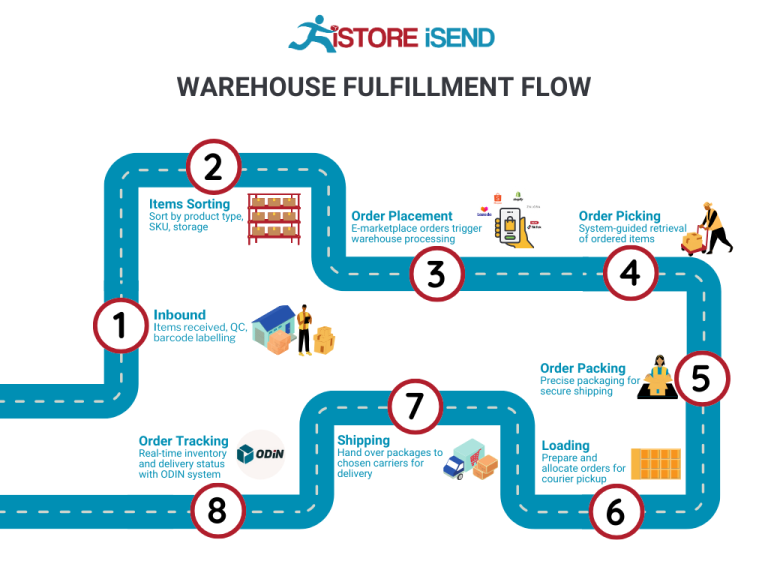
The packing stage is vital for protecting products during shipping and ensuring they arrive in excellent condition. Proper packing minimizes damage and enhances the overall customer experience. Additionally, an efficient packing process can lead to quicker turnaround times, allowing for faster delivery to customers. Businesses that invest in packing automation or optimized packing stations can further enhance productivity and reduce labor costs.
5. Shipping & Delivery
The final step in the order fulfillment process is shipping and delivery, where packed orders are dispatched to customers. This phase involves selecting the best shipping methods based on factors like cost, speed, and delivery location. Integration with shipping carriers allows businesses to track shipments and provide customers with real-time updates on their order status.
Shipping and delivery are critical to customer satisfaction, as they determine how quickly and reliably customers receive their orders. Delays or issues in this phase can tarnish a business’s reputation. By utilizing tools like shipping management software, businesses can streamline their shipping processes, optimize shipping routes, and ensure timely deliveries. Additionally, offering multiple shipping options can cater to different customer preferences, enhancing the overall shopping experience.
In summary, each step in the order fulfillment process—from receiving inventory to shipping and delivery—plays a pivotal role in ensuring customer satisfaction and operational efficiency. By focusing on optimizing each stage, e-commerce businesses can scale their operations effectively and meet the growing demands of online shopping.
Comparing Fulfillment Models: In-House vs. 3PL vs. Dropshipping
Fulfillment Model Comparison
| Model | Who Handles Inventory | Best For (Business Stage) | Key Advantage | Key Disadvantage |
|---|---|---|---|---|
| In-House Fulfillment | The business itself | Established businesses | Complete control over operations and customer experience | High overhead costs and complexity |
| Third-Party Logistics (3PL) | An external logistics provider | Growing and scaling businesses | Scalable solutions and access to specialized expertise | Less control over inventory and fulfillment speed |
| Dropshipping | Supplier or manufacturer | Startups and small businesses | Low startup costs and no inventory risk | Lower profit margins and less control over quality |
In-House Fulfillment
In-house fulfillment involves managing the entire logistics process internally, from inventory management to shipping. This model is best suited for established businesses that have a steady volume of orders and can afford the overhead costs associated with warehousing, staffing, and fulfillment operations. The key advantage of in-house fulfillment is the complete control it offers over the entire process, allowing businesses to tailor their operations to meet specific customer needs and maintain high service levels. This model also enables quick adjustments based on real-time data and customer feedback, fostering a responsive supply chain.
However, the downsides are significant. High overhead costs, including labor, warehousing, and equipment, can strain cash flow, especially for smaller businesses. Additionally, managing fulfillment in-house requires expertise and can lead to complexity in operations, diverting focus from core business activities such as product development and marketing. Therefore, while in-house fulfillment can provide a competitive edge through control and customization, it demands substantial resources and commitment.
Third-Party Logistics (3PL)
Third-party logistics (3PL) providers offer businesses a way to outsource their fulfillment operations. This model is ideal for growing and scaling businesses that may not have the resources or expertise to handle logistics effectively. By partnering with a 3PL, companies can benefit from scalable solutions, access to advanced technology, and specialized expertise in logistics and supply chain management. This means businesses can focus on their core competencies while leaving warehousing, order processing, and shipping to the experts.
The primary disadvantage of using a 3PL is the loss of direct control over inventory and fulfillment processes. This can lead to challenges in maintaining quality standards and meeting customer expectations, particularly if the 3PL does not align perfectly with the brand’s service philosophy. Additionally, there can be communication issues that arise from outsourcing, which can complicate inventory management and customer service. Nevertheless, for businesses looking to scale efficiently while minimizing logistical headaches, 3PLs can provide a powerful and effective solution.
Dropshipping
Dropshipping is a fulfillment model where the retailer does not keep products in stock but instead transfers customer orders directly to a supplier or manufacturer, who then ships the products directly to the customer. This model is particularly appealing for startups and small businesses due to its low startup costs and the absence of inventory risk. Entrepreneurs can launch their businesses without the financial burden of stocking products, making it easier to test new markets or product lines with minimal upfront investment.
However, dropshipping has its drawbacks. The profit margins are typically lower than other fulfillment models, as retailers often have to pay a premium to suppliers for the convenience of not holding inventory. Additionally, since the retailer relies on third-party suppliers for fulfillment, they have limited control over product quality and shipping times. This can lead to customer dissatisfaction if issues arise, such as delays or product defects. For businesses considering dropshipping, it is crucial to establish strong relationships with reliable suppliers and to have a robust customer service strategy to manage potential challenges.
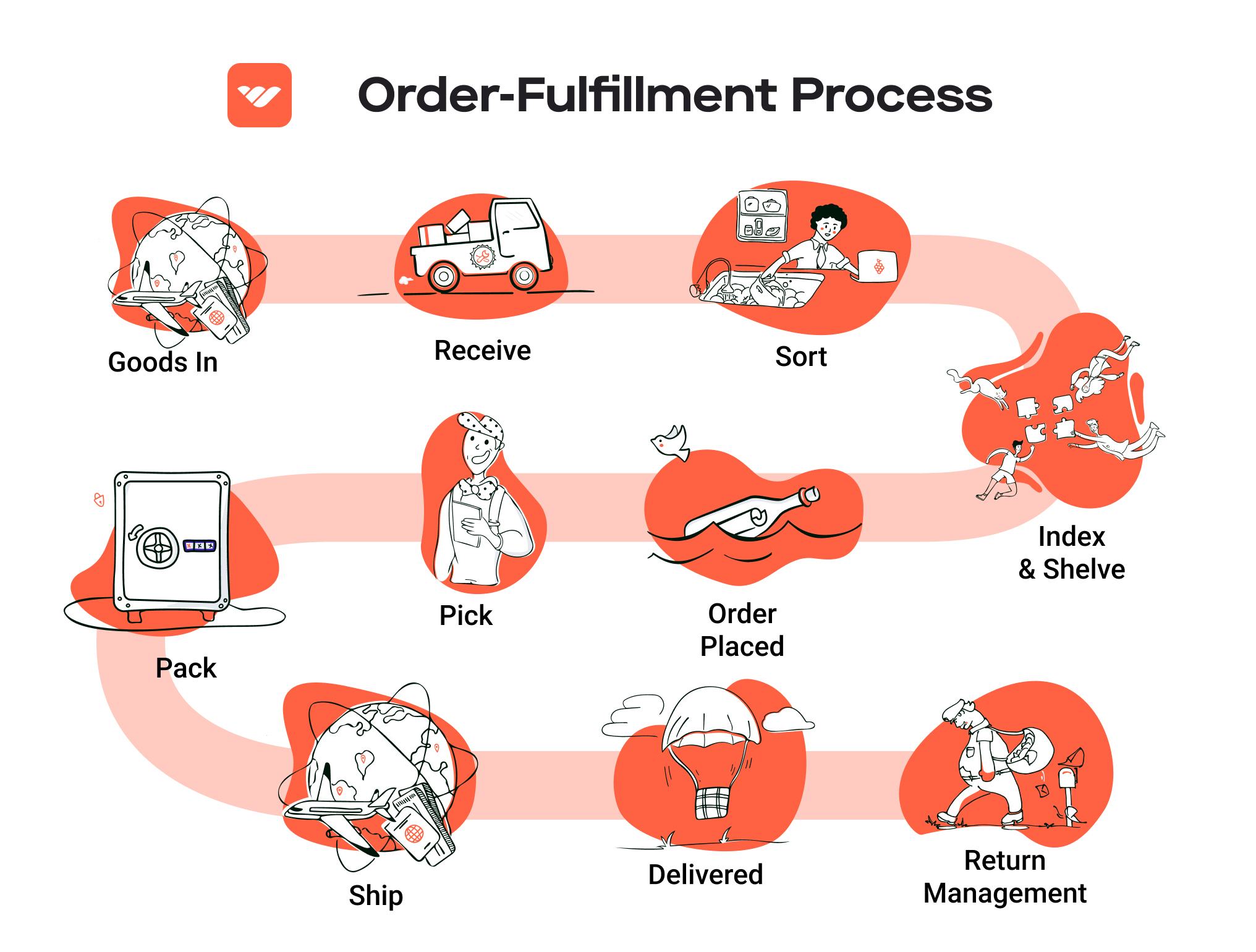
Conclusion
Each fulfillment model—In-House Fulfillment, Third-Party Logistics (3PL), and Dropshipping—offers distinct advantages and disadvantages that cater to different business needs and stages. The choice of fulfillment model should align with the business’s overall strategy, resources, and growth objectives. By understanding the intricacies of each approach, e-commerce business owners can make informed decisions that will enhance their operational efficiency and customer satisfaction as they scale their operations.
A Deep Dive into Amazon FBA: Pros, Cons, and Who It’s For
Understanding Fulfillment by Amazon (FBA)
Fulfillment by Amazon (FBA) is a service offered by Amazon that allows e-commerce sellers to store their products in Amazon’s fulfillment centers. Amazon then takes care of storage, packaging, shipping, and customer service for these products. This service enables sellers to leverage Amazon’s vast logistics network and customer base to enhance their business operations and sales potential.
How FBA Works
-
Product Listing and Inventory Management: Sellers create product listings on Amazon and ship their inventory to Amazon’s fulfillment centers. When a customer places an order for a product, Amazon takes over the fulfillment process.
-
Storage and Packaging: Amazon stores the products in its warehouses. When an order is received, Amazon picks, packs, and ships the items directly to the customer. They also handle returns and customer inquiries.
-
Shipping and Delivery: Amazon offers various shipping options, including free two-day shipping for Prime members. This capability enhances the customer experience and boosts sales for sellers.
-
Customer Service: Amazon manages all customer service inquiries and returns for FBA products, allowing sellers to focus on other aspects of their business.
Pros of Using FBA
-
Prime Eligibility: Products fulfilled through FBA automatically qualify for Amazon Prime, attracting millions of Prime members who prefer fast and free shipping. This can significantly increase sales and visibility.
-
Customer Trust: Amazon is a well-established brand with a reputation for reliable service. By using FBA, sellers can leverage Amazon’s customer trust, which can lead to higher conversion rates and repeat purchases.
-
Multi-Channel Fulfillment: FBA allows sellers to fulfill orders not only from Amazon but also from other sales channels, such as their own websites or other marketplaces. This flexibility helps streamline operations and reduce shipping costs.
-
Scalability: FBA allows businesses to scale quickly without the need for extensive logistics infrastructure. Sellers can send their products to Amazon and rely on their efficient fulfillment process, freeing them to focus on marketing and product development.
-
Automated Returns Management: Amazon handles returns for FBA products, which simplifies the process for sellers and enhances customer satisfaction. This can lead to better reviews and increased customer loyalty.
Cons of Using FBA
-
High Fees: While FBA can simplify logistics, it comes with various fees, including storage fees and fulfillment fees. These costs can add up quickly, particularly for slow-moving inventory or larger items, potentially squeezing profit margins.
-
Strict Inventory Rules: Amazon has strict inventory management policies, including limitations on the number of units that can be sent to a fulfillment center. Sellers must also ensure they have adequate stock levels to avoid stockouts or incurring long-term storage fees.
-
Commingling Risks: FBA products may be commingled with similar products from other sellers, which can lead to issues with product quality and brand integrity. If a customer receives a product that does not meet their expectations due to another seller’s inventory, it can negatively impact the seller’s reputation.
-
Limited Control Over Fulfillment: Once products are sent to Amazon’s fulfillment centers, sellers have limited control over how their products are handled, packaged, and shipped. This can lead to inconsistencies in customer experience and product presentation.
-
Complex Tax Implications: Using FBA can complicate tax obligations, as sales tax laws vary by state and can be impacted by where inventory is stored. Sellers need to be aware of their tax responsibilities to avoid penalties.
Who is FBA Best For?
Fulfillment by Amazon is particularly suited for:
-
Small to Medium-Sized Businesses: Sellers looking to scale their operations without investing heavily in logistics can benefit from FBA’s infrastructure and reach.
-
E-commerce Entrepreneurs: New entrepreneurs who want to enter the e-commerce space quickly can leverage FBA to focus on marketing and product sourcing while Amazon handles fulfillment.
-
Businesses with High Sales Volume: Companies that experience a high volume of sales can benefit from FBA’s automated fulfillment processes, which can lead to increased efficiency and customer satisfaction.
-
Sellers of Non-Seasonal Products: Businesses that sell items with consistent demand may find FBA particularly advantageous, as it allows them to maintain stock levels efficiently.
-
Brands Seeking Exposure: Companies looking to enhance their brand visibility and trust can leverage Amazon’s platform to reach a broader audience, especially if they are eligible for Prime.
In conclusion, Fulfillment by Amazon provides e-commerce businesses with a powerful tool to streamline their logistics and enhance customer experience. While there are significant advantages, including Prime eligibility and customer trust, sellers must also be aware of the potential downsides such as high fees and limited control over fulfillment processes. By weighing these factors, business owners can make informed decisions about whether FBA is the right fit for their operations.
Core Services Offered by Fulfillment Centers
Inventory Management & Warehousing
Inventory management is the backbone of any successful e-commerce operation. Fulfillment centers offer sophisticated inventory management systems that allow businesses to track stock levels in real-time. This service includes receiving inventory, storing products, and maintaining optimal stock levels to prevent overstock or stockouts.
The benefits of robust inventory management are manifold. First, it ensures that e-commerce businesses have the right products available when customers want them, thereby enhancing customer satisfaction and reducing lost sales opportunities. Second, advanced warehousing solutions often utilize technology such as RFID and barcode scanning to automate tracking and reduce human error. This efficiency can significantly lower operational costs and improve order accuracy.
Furthermore, fulfillment centers typically provide space for warehousing, which is especially advantageous for small to medium-sized enterprises (SMEs) that may not have the capital or resources to maintain their own storage facilities. By outsourcing warehousing needs, businesses can focus on core activities like marketing and product development while enjoying the peace of mind that their inventory is being managed efficiently.
Pick and Pack Services
Pick and pack services are essential for streamlining order fulfillment processes. This service involves selecting items from the warehouse based on customer orders and packing them for shipment. Fulfillment centers utilize advanced picking systems, such as batch picking and wave picking, to optimize efficiency and speed in order processing.
The primary benefit of pick and pack services is the reduction in order fulfillment time. Fast processing is critical in the e-commerce landscape, where consumers expect quick delivery. By outsourcing these tasks to a fulfillment center, businesses can ensure that orders are processed promptly, leading to improved customer satisfaction and loyalty.
Additionally, fulfillment centers often offer flexible packaging solutions tailored to the specific needs of products, ensuring that items are shipped safely and cost-effectively. This flexibility allows businesses to scale their operations easily, adapting to seasonal fluctuations in demand without the need for significant investments in labor or infrastructure.
Kitting and Assembly
Kitting and assembly services are increasingly valuable for e-commerce businesses looking to enhance their product offerings. Kitting involves bundling multiple products into a single package for sale, while assembly refers to the process of constructing products from various components before shipping.
The benefits of these services are particularly pronounced in niche markets where product customization is a selling point. By utilizing kitting and assembly services, businesses can offer unique product combinations that appeal to customers, thereby differentiating themselves from competitors.
Moreover, these services can lead to cost savings by reducing shipping expenses. Instead of shipping multiple individual items, businesses can send a single package containing a kit, which can also minimize packaging waste. This not only lowers shipping costs but also aligns with sustainability goals, a growing concern for many consumers. Fulfillment centers often have the expertise and resources to execute these processes efficiently, enabling businesses to focus on sales and marketing strategies.
Returns Management (Reverse Logistics)
Returns management, often referred to as reverse logistics, is a critical component of the fulfillment process that is frequently overlooked. This service encompasses the handling of returned products, including inspection, restocking, and refurbishing items when necessary.
Effective returns management is essential for maintaining customer satisfaction and loyalty. A smooth and hassle-free return process can significantly enhance a customer’s perception of a brand. Fulfillment centers often have established protocols to manage returns efficiently, which can include automated systems for tracking and processing returns.
The benefits of outsourcing returns management include reduced operational complexity and improved inventory turnover. By leveraging the expertise of fulfillment centers, businesses can minimize the costs associated with returns and improve the speed at which returned products are processed and restocked. This efficiency not only mitigates losses but also allows businesses to recover value from returned items more quickly.
Additionally, an effective returns management system provides valuable insights into product performance and customer behavior, allowing businesses to make informed decisions about inventory and product offerings in the future. This feedback loop is invaluable for continuous improvement and strategic planning.
By leveraging these core services, e-commerce businesses can significantly enhance their operational efficiency, customer satisfaction, and scalability. Fulfillment centers serve as vital partners in navigating the complexities of modern logistics, enabling businesses to focus on growth and innovation.
How to Choose a Fulfillment Partner: A 6-Point Checklist
Location & Warehouse Network
Why It Matters:
The geographical location of your fulfillment partner’s warehouses significantly impacts shipping times and costs. A strategically located warehouse can reduce transit times, enhance customer satisfaction, and lower shipping expenses.
Questions to Ask:
– Where are your warehouses located, and how does that align with my target customer base?
– Do you have multiple fulfillment centers, and how do you determine which center to ship from?
– How do you handle regional shipping rates and potential tax implications for different states?
Technology & Integrations
Why It Matters:
In today’s fast-paced e-commerce environment, the technology used by your fulfillment partner can streamline operations, improve order accuracy, and provide real-time visibility. A robust technology stack allows for seamless integration with your existing systems, such as e-commerce platforms, inventory management, and customer relationship management tools.
Questions to Ask:
– What technology do you use for inventory management, order processing, and tracking?
– Can your systems integrate with my existing e-commerce platform (e.g., Shopify, WooCommerce)?
– Do you provide an API for custom integrations, and what is the onboarding process like?
Specializations (e.g., Cold Storage, Oversized Items)
Why It Matters:
Different businesses have unique fulfillment needs based on their product types. Whether you require cold storage for perishables, handling oversized items, or specialized packaging, choosing a partner with the right expertise can prevent costly mistakes and ensure product integrity.
Questions to Ask:
– What types of products do you specialize in handling?
– Do you have the capability to manage temperature-sensitive products, hazardous materials, or oversized shipments?
– How do you ensure compliance with industry regulations for specialized items?
Scalability & Capacity
Why It Matters:
As your business grows, your fulfillment partner must be able to scale operations to meet increased demand. A partner with flexible capacity can accommodate seasonal spikes and unexpected surges in orders without compromising service levels.
Questions to Ask:
– What is your current capacity, and how have you handled peak seasons in the past?
– How do you manage inventory fluctuations and backorders?
– Can you provide examples of how you’ve scaled for clients experiencing rapid growth?
Pricing and Contracts
Why It Matters:
Understanding the pricing structure is crucial to maintaining profitability. Transparent pricing models prevent surprises and allow for better budgeting. Additionally, contract terms can have long-term implications on your operational flexibility.
Questions to Ask:
– What is your pricing structure (e.g., per order, per item, storage fees)?
– Are there any additional costs I should be aware of (e.g., pick and pack fees, returns processing)?
– What is the length of your contracts, and what are the terms for termination or changes?
Customer Support & Reviews
Why It Matters:
Strong customer support is essential for resolving issues quickly and maintaining smooth operations. Additionally, researching reviews and testimonials can provide insights into the partner’s reliability and service quality.
Questions to Ask:
– What support channels do you offer (e.g., phone, email, live chat), and what are your response times?
– Can you provide references from current or past clients?
– How do you handle issues such as lost packages, inventory discrepancies, or shipping delays?
Conclusion
Choosing the right fulfillment partner is a critical decision that can significantly affect your e-commerce business’s success. By using this checklist, you can assess potential partners against your specific needs and ensure you make an informed choice that supports your growth objectives. Each point is designed to guide you in evaluating partners thoroughly, ultimately leading to a strategic partnership that enhances your operational efficiency and customer satisfaction.
Understanding Fulfillment Pricing: A Breakdown of Common Fees
Initial Setup Fees
When partnering with a fulfillment center, the first cost you may encounter is the initial setup fee. This fee is typically charged to establish your account and integrate your inventory into the warehouse management system. The setup process may include configuring your product listings, establishing shipping preferences, and setting up the necessary technology for inventory tracking.
The initial setup fee can vary widely depending on the complexity of your needs and the fulfillment provider you choose. Some companies may offer a flat rate, while others could charge based on the number of SKUs (Stock Keeping Units) you plan to manage. It is crucial to clarify what is included in this fee, such as software integration, training for your team, and any additional services that may incur further costs.
Receiving Fees
Receiving fees are charged when your inventory arrives at the fulfillment center. This fee covers the labor and resources required to unload, inspect, and catalog your products into the warehouse system. The receiving process ensures that the right items are accounted for and stored correctly.
These fees are usually calculated per unit or by weight, and can also depend on the volume of inventory being received. Higher volumes may lead to reduced per-unit costs, making it beneficial for businesses to plan shipments strategically. Additionally, if your products require special handling or inspection, be prepared for increased receiving fees.
Storage Fees (per pallet/bin)
Storage fees are incurred for the space your inventory occupies in the fulfillment center. This fee is typically charged on a monthly basis and can be calculated per pallet or per bin, depending on how your products are stored.
The cost structure can vary based on factors such as the size of the items, the duration of storage, and the overall demand for warehouse space. For instance, seasonal fluctuations in inventory may lead to higher storage fees during peak periods. To manage these costs effectively, consider implementing inventory turnover strategies, such as optimizing your product mix or utilizing just-in-time inventory practices.
Pick & Pack Fees (per item/order)
Pick and pack fees are charged for the labor involved in retrieving items from storage and preparing them for shipment. This fee can be calculated either per item or per order, depending on the fulfillment provider’s pricing model.
Typically, the pick fee covers the act of locating and picking the item from the shelf, while the pack fee includes packaging materials and labor to prepare the item for shipment. Businesses should consider the nature of their products when evaluating these fees; for instance, items that require special packaging or handling may incur additional costs. It’s advisable to negotiate these fees, particularly if you expect high order volumes.
Shipping Fees
Shipping fees are one of the most significant costs associated with fulfillment services and can vary based on multiple factors, including the shipping method, destination, package weight, and dimensions. Fulfillment centers often have partnerships with major carriers, which can lead to reduced shipping rates due to bulk shipping agreements.
These fees are generally calculated based on the service level chosen—standard, expedited, or overnight shipping—and may also be influenced by the shipping volume you generate. Businesses should carefully assess their shipping strategy, as offering free or discounted shipping can enhance customer satisfaction but may also impact profit margins.
Tips for Getting an Accurate Quote
-
Understand Your Needs: Before reaching out for a quote, have a clear understanding of your business’s fulfillment requirements, including order volume, inventory types, and any specific handling needs.
-
Request Detailed Quotes: When requesting quotes from fulfillment providers, ask for a breakdown of all potential fees, including hidden costs that may arise.
-
Evaluate Multiple Providers: Don’t settle for the first quote you receive. Compare pricing and services from multiple fulfillment centers to find the best fit for your business.
-
Negotiate Terms: Many fulfillment providers are open to negotiation, especially if you can demonstrate high order volumes or a long-term partnership potential.
-
Consider Scalability: Ensure the fulfillment center you choose can scale with your business. Understand how pricing may change as your order volume increases or decreases.
By thoroughly understanding these common fulfillment pricing models and strategically approaching potential providers, you can optimize your logistics costs while ensuring efficient service delivery.
Frequently Asked Questions (FAQs) about Fulfillment
1. What is the Amazon Fulfillment Center Tour at LAS7?
The Amazon Fulfillment Center Tour at LAS7 in Las Vegas offers an in-depth look at the operations within a modern fulfillment center. Visitors can witness firsthand how technology and human effort work together to process orders efficiently. The tour typically lasts between 60 to 90 minutes and includes insights into the logistics and systems that enable Amazon to deliver products swiftly to customers.
2. How do I book a tour at the LAS7 Fulfillment Center?
To book a tour, you must register through the Amazon Tours website. Tours are free, but spaces are limited and can fill up quickly. It’s advisable to check the calendar regularly for new openings, as new slots are released mid-month. For groups of 10 to 25, you can request a private tour.
3. What should I wear to the Amazon Fulfillment Center Tour?
For safety and comfort, it is mandatory to wear flat, closed-toed shoes (no sandals or high heels) and long pants. Shirts must have sleeves, and loose-fitting clothing or accessories that could pose a safety hazard are not permitted. Visitors will be issued identification badges upon check-in.
4. Are there age restrictions for the tour?
Yes, the minimum age for participation in the tour is 6 years old. Children under 18 must be accompanied by an adult, and there must be at least one adult for every ten minors in attendance. Safety regulations require that children be able to walk the tour route without assistance.
5. Can I take photos during the tour?
Photography is restricted during the tour. Cell phones are not allowed, and still photography is only permitted in designated areas, such as the lobby. It’s best to leave your phone at home or in your vehicle for the duration of the visit.
6. What is the difference between a warehouse and a fulfillment center?
A warehouse is primarily a storage facility where goods are kept until they are needed. In contrast, a fulfillment center is designed specifically for processing and shipping orders. Fulfillment centers often integrate technology and logistics systems to ensure quick and efficient order delivery, catering to the needs of e-commerce businesses.
7. What is a third-party logistics provider (3PL)?
A third-party logistics provider (3PL) is a company that offers logistics services to businesses, including warehousing, order fulfillment, and distribution. By outsourcing these functions to a 3PL, e-commerce businesses can focus on core activities like marketing and product development while relying on the 3PL for efficient logistics management.
8. How much do fulfillment services cost?
Fulfillment service costs can vary widely based on factors such as order volume, product size, storage requirements, and additional services like packaging or shipping. Typically, businesses can expect to pay per order processed, along with monthly storage fees for inventory held at the fulfillment center. It’s essential to analyze your specific needs and compare quotes from different providers to find the best fit.
9. What safety measures are in place during the tour?
Amazon prioritizes safety during tours. Visitors must adhere to the dress code and safety guidelines outlined before the tour. The facility is equipped with trained staff who will provide safety instructions and monitor the group throughout the tour to ensure a secure environment.
10. Is the Amazon Fulfillment Center Tour accessible for individuals with disabilities?
Yes, Amazon Fulfillment Centers are designed to be accessible to individuals with disabilities. If you require specific accommodations, it is advisable to reach out to the Amazon Tours Help Center ahead of your visit to confirm available support options.
Conclusion: Is Outsourcing Fulfillment the Right Move for Your Business?
Evaluating the Benefits of Outsourcing Fulfillment
Outsourcing your fulfillment operations can be a transformative decision for your e-commerce business, enabling you to streamline processes and focus on core competencies. One of the primary advantages is time savings. By delegating logistics to a specialized partner, you free up valuable hours that can be redirected towards strategic initiatives, product development, and customer engagement.
Scalability is another compelling reason to consider outsourcing. As your business grows, so do the complexities of managing inventory, order processing, and shipping logistics. A proficient fulfillment partner can seamlessly scale operations to accommodate spikes in demand, whether due to seasonal trends or successful marketing campaigns, ensuring that your customers receive their orders promptly without overwhelming your internal resources.
Furthermore, leveraging the expertise of a fulfillment service can enhance your operational efficiency. These partners often possess advanced technology and systems designed to optimize inventory management, reduce errors, and improve shipping times. Their industry knowledge can provide insights into best practices, helping you stay competitive in a fast-paced e-commerce landscape.
However, the decision to outsource fulfillment should not be taken lightly. Selecting the right partner is crucial to your growth strategy. Conduct thorough research and consider factors such as their track record, technology capabilities, and alignment with your business goals.
Take Action Now
To determine if outsourcing fulfillment is the right move for your business, start by auditing your current shipping processes. Identify bottlenecks, areas for improvement, and the resources you currently allocate to logistics. By understanding your fulfillment landscape, you can make an informed decision about whether a fulfillment partner can help you achieve your growth objectives more effectively. Embrace the opportunity to enhance your operational efficiency and customer satisfaction by exploring the potential of outsourcing fulfillment today.
Important Disclaimer
⚠️ Important Disclaimer
The information in this guide is for educational purposes. Fulfillment services, pricing, and platform features change frequently. Always conduct your own due diligence and consult with providers directly before making business decisions.
